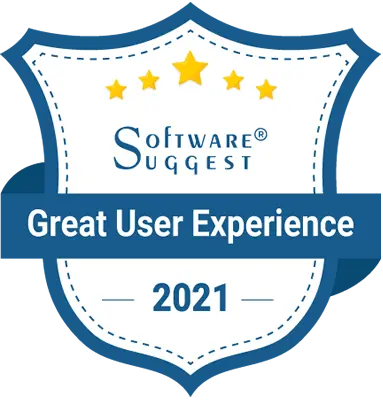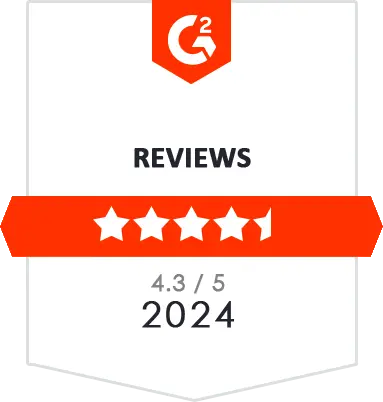In the world of network marketing, success depends on the strength and structure of your distributor base. Building, managing, and nurturing a downline is no easy task, especially as your organization expands across multiple levels. Traditional spreadsheets or manual systems can quickly become overwhelming, leading to confusion, lost opportunities, and inefficiencies.
This is where advanced solutions designed for network marketers step in. These platforms not only simplify downline management but also provide visual clarity through Genealogy features, helping businesses understand the flow of distributors and commissions. Even better, many providers now offer a free demo, allowing you to test the system before committing.
At its core, network marketing thrives on duplication and steady team growth. Each distributor brings in new members, who in turn build their own networks, creating a structure that can extend into multiple levels. While this model is the foundation of the industry’s success, it also introduces complexity. Without the right tools and systems, keeping track of a growing organization becomes chaotic, often leading to errors, inefficiencies, and frustration among both leaders and distributors.
Effective downline management is not just an administrative task—it is the backbone of sustainable growth in network marketing. Here are the main reasons it plays such an essential role:
As teams expand into the hundreds or even thousands, it becomes increasingly difficult to understand the flow of recruitment and performance. Who recruited whom? Which teams are thriving, and which need more support? Without clarity, managing such growth can feel like navigating in the dark. A structured system provides a visual representation of the network, making it easier to see connections, relationships, and the overall shape of the organization. This clarity eliminates confusion and allows leaders to focus their energy on strategy rather than manual tracking.
Trust is the currency of network marketing, and nothing undermines trust faster than commission errors. When earnings are calculated manually, even small mistakes can cause disputes and discourage distributors. Accurate, automated systems ensure that every distributor receives the compensation they deserve, regardless of how deep or complex the hierarchy becomes. By guaranteeing fairness and precision, businesses can maintain credibility and strengthen long-term loyalty among their teams.
Motivation is the driving force behind growth. Distributors need to feel that their efforts matter and that their progress is visible. When they can easily view their position, achievements, and potential rewards, it fuels excitement and commitment. A transparent system that displays milestones and opportunities encourages individuals to recruit more actively, engage in training, and focus on their goals. Motivated distributors not only grow their own teams but also contribute to the overall momentum of the organization.
A successful network marketing business requires more than just daily operations—it needs forward-thinking strategies. Effective downline management provides insights into the strengths and weaknesses of the organization. Leaders can see which areas are thriving and which require additional training, resources, or attention. With this knowledge, businesses can allocate their time and investments more effectively, focusing on areas that will deliver the greatest impact. Whether it’s launching targeted training programs, offering incentives, or supporting struggling distributors, strategic planning becomes far more precise when built on accurate downline data.
Managing a growing network of distributors is one of the most challenging aspects of network marketing. As an organization expands, so does the complexity of tracking members, monitoring performance, and ensuring accurate commission payouts. Relying on manual systems or spreadsheets may work for small teams, but as the downline grows, these methods become inefficient, error-prone, and nearly impossible to scale.
This is where modern mlm software steps in as a transformative solution. By combining automation, integrated reporting, and advanced data visualization, these platforms help businesses manage complex organizational structures with ease. They streamline daily operations, eliminate redundant tasks, and provide clarity where traditional methods create confusion. In short, they empower leaders to focus less on administration and more on growth.
One of the greatest advantages of modern platforms is the ability to track performance instantly. Distributors can log in and immediately see their personal sales, team growth, and commission status. At the same time, administrators gain a complete overview of the entire organization at a glance. This real-time visibility ensures that no one is left guessing about their progress or waiting for updates at the end of the month. Transparency builds confidence and encourages distributors to take action quickly.
Manual commission calculations are not only tedious but also highly vulnerable to errors. A single miscalculation can lead to disputes, frustration, and even loss of trust. With automation, payments are distributed based on predefined compensation plans, ensuring accuracy every time. Whether the plan is binary, matrix, or hybrid, the system applies the rules consistently, reducing administrative workload and reinforcing trust cross the network.
Mistakes in reporting or data entry can have ripple effects throughout an organization. Automated systems dramatically minimize such errors by standardizing processes and removing the need for repetitive manual input. The result is a more reliable operation where distributors and administrators alike can trust the information they see. Fewer errors mean fewer disputes, more satisfied team members, and smoother overall performance.
Tasks that once consumed hours—like generating complex reports, verifying qualifications, or tracking eligibility for bonuses—can now be completed in minutes. Automation not only speeds up these processes but also ensures consistency and accuracy. By saving valuable time, leaders and staff can shift their attention to higher-value activities, such as mentoring distributors, strategizing growth initiatives, or launching new product campaigns.
Perhaps one of the most important benefits of adopting advanced technology is scalability. A business that starts with a few dozen distributors may eventually grow to thousands or even tens of thousands. With the right platform in place, growth does not create additional chaos. The system adapts seamlessly, maintaining performance and efficiency regardless of network size. This scalability ensures that businesses can expand confidently, knowing their operations are supported by a strong technological foundation.
One of the most valuable features offered by modern platforms for network marketing is Genealogy visualization. At its core, this tool provides a graphical representation of the distributor tree, showing how each member of the organization is connected. Rather than sifting through endless lists, spreadsheets, or manual records, business leaders and distributors alike gain a clear, organized view of the entire network.
As teams expand into multiple levels, the structure becomes more intricate. Without visualization, managing these complex layers is overwhelming. With Genealogy tools, however, even the most complicated downlines can be understood at a glance, creating both clarity and confidence.
Trying to understand a downline from spreadsheets or text-based reports is like piecing together a puzzle without seeing the full picture. Genealogy visualization provides a structured map that highlights connections in an intuitive way. Leaders can instantly see the “family tree” of their network—who recruited whom, which branches are expanding, and where gaps exist. This clarity saves time and reduces the frustration that comes with data overload.
One of the main drivers of success in network marketing is growth, but not all parts of the organization expand at the same rate. With Genealogy visualization, businesses can easily identify which legs of the network are thriving and which ones may need additional attention. By spotting growth patterns quickly, leaders can direct resources and mentorship where they are most needed, ensuring balance and long-term stability.
A visual tree doesn’t just show structure—it also highlights performance. Active distributors who consistently bring in new members or achieve high sales stand out in the diagram, while inactive members are easy to identify. This makes it simple for leaders to reward high performers, re-engage underperforming distributors, and create targeted development plans to strengthen the entire network.
For new distributors, joining a network can feel overwhelming. They often struggle to understand where they fit within the larger organization. Genealogy tools solve this by giving them a visual snapshot of their exact position in the team, who their upline is, and who falls under their downline. This not only helps them grasp the bigger picture faster but also motivates them to take ownership of their growth. A clear map of the network turns what could be confusion into confidence.
Investing in software is a significant decision, and not all platforms are created equal. A free demo is an invaluable opportunity to test usability, features, and support before committing financially.
Key Advantages of Exploring a Demo
When exploring platforms for your business, it’s essential to look for features that go beyond the basics. The right system should empower both management and distributors to perform efficiently, streamline operations, and drive growth. Here are the key features to prioritize:
Choosing a platform with these features not only simplifies day-to-day operations but also provides the foundation for scalable, sustainable growth. When distributors and management have access to real-time insights, streamlined processes, and flexible tools, the organization can focus on expanding its network and driving sales rather than getting bogged down in administrative tasks.
Even the most feature-rich system can fall short if it’s difficult to use. A platform may boast advanced functionality, but if administrators and distributors struggle to navigate it, adoption will be slow and frustration will mount. Usability is therefore one of the most critical factors to evaluate before investing in any solution. A user-friendly system ensures smoother onboarding, higher engagement, and greater efficiency across the organization.
Here are the key usability considerations to keep in mind:
A clean, well-structured dashboard reduces the learning curve significantly. Users should be able to find essential features—such as reporting, Genealogy charts, and commission summaries—without extensive searching. An intuitive interface not only speeds up training but also builds confidence, allowing both new and experienced distributors to use the platform effectively from day one.
No two businesses operate in exactly the same way. That’s why customization is so important. The ability to tailor views, adjust notifications, and create personalized reports ensures the platform aligns with your unique operational needs. A customizable interface allows leaders to focus on the most relevant data while giving distributors tools that match their personal goals and workflows.
In today’s mobile-driven world, a solution that only works well on desktop is no longer enough. Distributors and administrators alike need access on the go, whether through tablets or smartphones. A system that performs seamlessly across devices ensures that tasks such as tracking progress, placing orders, or monitoring team performance can be completed anytime, anywhere. This flexibility keeps the organization moving forward without delays.
Even with an intuitive interface, questions will arise. Comprehensive documentation—such as user guides, FAQs, and video tutorials—can significantly reduce downtime. In addition, responsive customer support is essential for addressing issues quickly and effectively. When users feel supported, they’re more likely to stay engaged and make full use of the system’s features.
Ultimately, usability is about more than convenience. It directly impacts productivity, distributor satisfaction, and organizational growth. A platform that is easy to navigate encourages adoption, reduces errors, and ensures that valuable time is spent building the business rather than struggling with technology.
Adopting a new platform is only half the battle; implementing it effectively is where the real success lies.
Businesses that adopted modern solutions for downline management report impressive results:
As technology evolves, so do the possibilities for network marketing businesses:
Staying ahead of these trends ensures your business remains competitive and future-proof.
Experience the power of Genealogy software and see how it simplifies downline management, boosts motivation, and drives sustainable growth for your network marketing business.
Track your team in real time, ensure accurate commissions, and visualize your entire network effortlessly. Take control of your MLM growth and empower your distributors with a system designed for success.
Managing a growing downline can feel overwhelming, but the right tools transform complexity into clarity. With features like real-time Genealogy visualization, automated commissions, and integrated e-commerce, advanced mlm software empowers businesses to operate more efficiently and keep distributors engaged.
Exploring a free demo before making a purchase is a strategic move—it allows you to test usability, assess features, and evaluate support without any risk. By choosing the right system, you not only simplify operations but also lay a solid foundation for growth, transparency, and distributor success.
In the end, the right solution isn’t just about software—it’s about building a thriving, motivated, and well-structured network marketing organization ready to succeed in today’s digital landscape.




Our clients' success stories speak volumes. Their testimonials highlight our dedication to delivering quality, reliability, and affordability. With a proven track record of satisfied customers across multiple industries, you can trust that our software services are not only best-in-class but also designed to fit your budget without compromising on quality. Let us help you achieve your business goals affordably and efficiently!